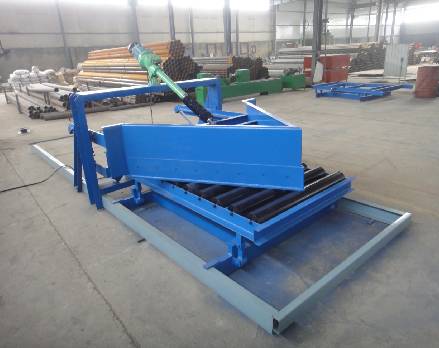 Afrikaans
Afrikaans  Albanian
Albanian  Amharic
Amharic  Arabic
Arabic  Armenian
Armenian  Azerbaijani
Azerbaijani  Basque
Basque  Belarusian
Belarusian  Bengali
Bengali  Bosnian
Bosnian  Bulgarian
Bulgarian  Catalan
Catalan  Cebuano
Cebuano  Corsican
Corsican  Croatian
Croatian  Czech
Czech  Danish
Danish  Dutch
Dutch  English
English  Esperanto
Esperanto  Estonian
Estonian  Finnish
Finnish  French
French  Frisian
Frisian  Galician
Galician  Georgian
Georgian  German
German  Greek
Greek  Gujarati
Gujarati  Haitian Creole
Haitian Creole  hausa
hausa  hawaiian
hawaiian  Hebrew
Hebrew  Hindi
Hindi  Miao
Miao  Hungarian
Hungarian  Icelandic
Icelandic  igbo
igbo  Indonesian
Indonesian  irish
irish  Italian
Italian  Japanese
Japanese  Javanese
Javanese  Kannada
Kannada  kazakh
kazakh  Khmer
Khmer  Rwandese
Rwandese  Korean
Korean  Kurdish
Kurdish  Kyrgyz
Kyrgyz  Lao
Lao  Latin
Latin  Latvian
Latvian  Lithuanian
Lithuanian  Luxembourgish
Luxembourgish  Macedonian
Macedonian  Malgashi
Malgashi  Malay
Malay  Malayalam
Malayalam  Maltese
Maltese  Maori
Maori  Marathi
Marathi  Mongolian
Mongolian  Myanmar
Myanmar  Nepali
Nepali  Norwegian
Norwegian  Norwegian
Norwegian  Occitan
Occitan  Pashto
Pashto  Persian
Persian  Polish
Polish  Portuguese
Portuguese  Punjabi
Punjabi  Romanian
Romanian  Russian
Russian  Samoan
Samoan  Scottish Gaelic
Scottish Gaelic  Serbian
Serbian  Sesotho
Sesotho  Shona
Shona  Sindhi
Sindhi  Sinhala
Sinhala  Slovak
Slovak  Slovenian
Slovenian  Somali
Somali  Spanish
Spanish  Sundanese
Sundanese  Swahili
Swahili  Swedish
Swedish  Tagalog
Tagalog  Tajik
Tajik  Tamil
Tamil  Tatar
Tatar  Telugu
Telugu  Thai
Thai  Turkish
Turkish  Turkmen
Turkmen  Ukrainian
Ukrainian  Urdu
Urdu  Uighur
Uighur  Uzbek
Uzbek  Vietnamese
Vietnamese  Welsh
Welsh  Bantu
Bantu  Yiddish
Yiddish  Yoruba
Yoruba  Zulu
Zulu Types and Functions of Conveyor Belt Scrapers for Efficient Material Handling
Types of Conveyor Belt Scrapers Ensuring Efficiency and Cleanliness in Material Handling
Conveyor belts are a staple in various industries, playing a crucial role in the transportation of materials. However, with continuous use, the accumulation of dirt, debris, and material spillage can hinder the efficiency of these systems. This is where conveyor belt scrapers come into play. These devices are instrumental in maintaining belt cleanliness, thus ensuring smooth and effective operation. In this article, we will explore the different types of conveyor belt scrapers and their significance in enhancing operational efficiency.
1. Primary Scrapers
Primary scrapers are the first line of defense in keeping conveyor belts clean. Located at the discharge end of the conveyor, they are designed to remove the majority of material that may cling to the belt. These scrapers typically feature a rigid blade that comes into contact with the conveyor surface. As the conveyor moves, the scraper dislodges adhering material, preventing it from falling onto the idlers or the ground below.
Primary scrapers come in various designs—some are fixed, while others can be adjusted for optimal performance based on the belt tension and material characteristics. This adjustability is crucial as it allows for accommodating varying operational conditions, ensuring maximum cleanliness.
2. Secondary Scrapers
While primary scrapers handle the bulk of the material, secondary scrapers provide an additional layer of cleaning. They are strategically positioned just after the primary scrapers and are typically designed to remove any remaining residue that the first scraper may have missed. Secondary scrapers can be made of soft materials, such as polyurethane or rubber, which gently but effectively contact the conveyor belt to clean it without causing damage.
These scrapers are critical, particularly in applications involving sticky or wet materials, where the likelihood of residuals adhering to the belt increases significantly. By ensuring a cleaner belt, secondary scrapers contribute to lower operational costs due to reduced material loss and lower maintenance needs.
conveyor belt scraper types

As the name suggests, combination scrapers integrate the functionalities of primary and secondary scrapers into a single unit. This innovative design offers enhanced cleaning efficiency, simplifying the maintenance process and reducing installation costs. Combination scrapers are especially beneficial in environments where space is limited, offering a comprehensive cleaning solution without requiring additional equipment.
These scrapers may utilize multiple scraping materials and designs, enabling them to tackle various material types with ease. Their versatility makes them suitable for a wide range of industries, from mining to food processing.
4. Hybrid Scrapers
Recent advancements have led to the development of hybrid scrapers, which combine both mechanical and pneumatic cleaning technologies. These scrapers feature a mechanical blade for physical cleaning, while an integrated pneumatic system employs air pressure to further dislodge material from the belt.
Hybrid scrapers are particularly effective in demanding applications where traditional scrapers might struggle, such as in environments with high humidity or during the handling of particularly sticky materials. Their ability to tackle challenging cleaning issues makes them a valuable addition to many conveyor systems.
5. Specialty Scrapers
Beyond the standard types, specialty scrapers are designed for specific applications or unique challenges. For example, scrapers designed for use in high-temperature environments or those equipped with special coatings to handle corrosive materials fall into this category. These specialized scrapers ensure that even the most challenging conditions do not compromise conveyor belt performance.
Conclusion
In conclusion, conveyor belt scrapers play a vital role in maintaining the efficiency and cleanliness of material handling systems. The variety of scraper types—primary, secondary, combination, hybrid, and specialty—ensures that there is an appropriate solution for every operational need. By investing in the right scrapers, companies can minimize material loss, reduce maintenance costs, and enhance the overall productivity of their conveyor systems. Understanding the specific requirements of your operation will allow you to select the most effective scraper, leading to a cleaner and more efficient conveyor belt system.
-
Revolutionizing Conveyor Reliability with Advanced Rubber Lagging PulleysNewsJul.22,2025
-
Powering Precision and Durability with Expert Manufacturers of Conveyor ComponentsNewsJul.22,2025
-
Optimizing Conveyor Systems with Advanced Conveyor AccessoriesNewsJul.22,2025
-
Maximize Conveyor Efficiency with Quality Conveyor Idler PulleysNewsJul.22,2025
-
Future-Proof Your Conveyor System with High-Performance Polyurethane RollerNewsJul.22,2025
-
Driving Efficiency Forward with Quality Idlers and RollersNewsJul.22,2025





























